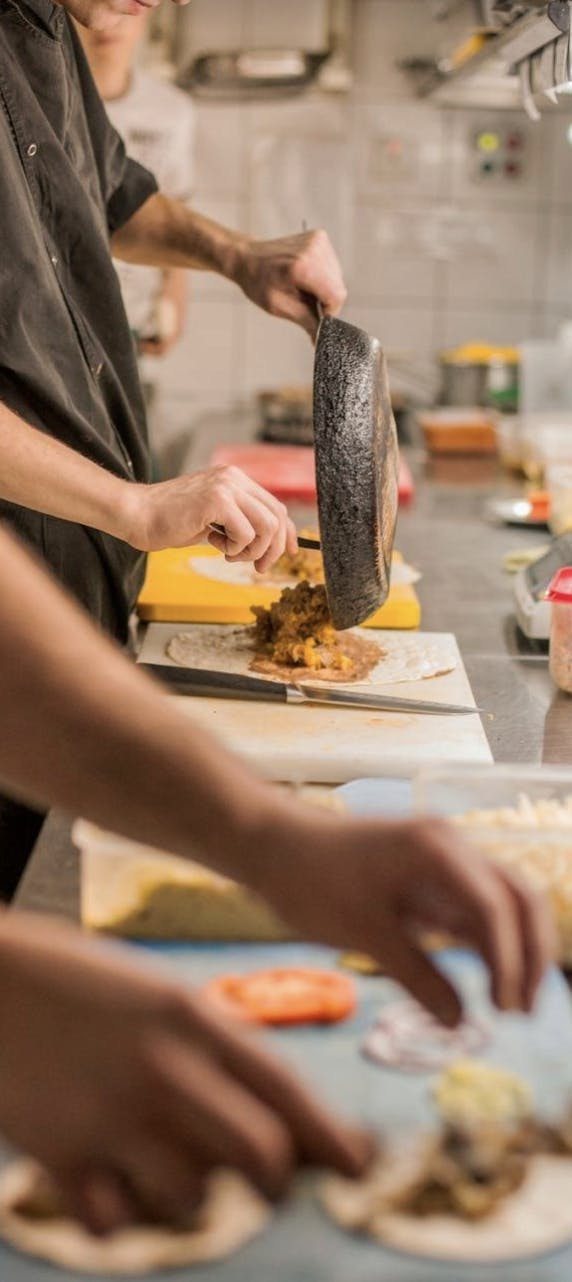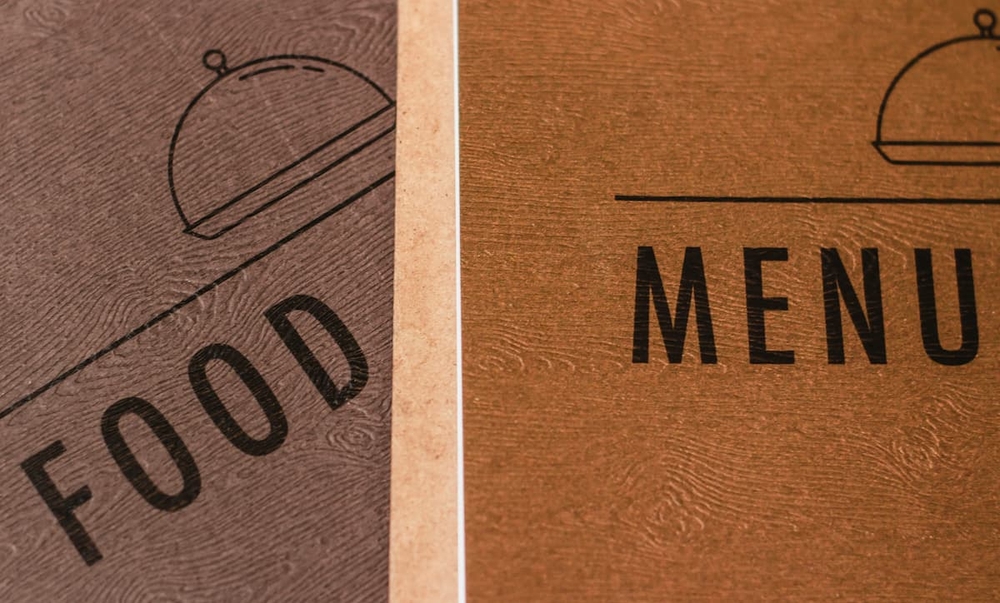Navigating Restaurant Equipment Financing: Strategies for Success
Table of Contents
CloudKitchens
How many tacos can be delivered from a 1000sqft restaurant?
The same amount as a 200sqft ghost kitchen.

Whether you’ve decided to open an artisanal food truck or you’re checking out spots for a laid-back brick-and-mortar affair, you know that the start-up costs of opening an eatery can add up quickly, especially once you figure in the price of restaurant equipment.
Ovens, ranges, ventilators, freezers, shelving and storage racks—all can come at a pretty penny, particularly if you’re eyeing high-quality options that were built to last.
Fortunately, there are a handful of savvy ways to fund your dream kitchen or revamp the one you have. Read on as we dish out the latest on restaurant equipment financing so that you can make the soundest choice for your enterprise.
Restaurant equipment financing: 4 top options
One of the most vital tasks when choosing between your finance options is ensuring that you’re left with enough cash on hand to pay for other restaurant essentials—namely, your staff, supplies, lease (if it applies), and utilities. Here are a few of the leading options.
#1 Equipment leasing and rentals
Equipment leasing may be ideal for entrepreneurs who want the advantages that topnotch equipment affords but don’t have the budget to purchase said equipment outright. It’s also optimal for restaurateurs who are testing out restaurant ideas via a pop-up or temporary/seasonal cafe.
Typically, restaurant equipment leasing is available in one of two forms: You can either rent the equipment or sign a lease-to-own contract.
Pros
Selecting this route may:
- Enable you to make monthly payments, which might be considerably easier than coming up with a fat stack of cash
- Offer you the chance to write off your rental/lease payments as a tax deduction
Cons
The main drawback of renting equipment? You may be responsible for footing the bill for repairs. Additionally, you might face:
- High interest rates, which can, over time, substantially raise the price of the equipment
- Early termination fees, which are a genuine possibility if you’re just starting out in the biz (remember, and this isn’t mean to deter you, up to 60% of restaurants shutter their doors within their first year)
#2 Traditional bank loan
A traditional loan from a bank or credit union usually offers the most attractive interest rates and may be especially wise for long-running restaurants who have proven success.
Pros
In addition to lower interest rates, a traditional bank loan may provide:
- The ability to strengthen your credit score if you make your payments on time
- The chance to use your loan for other expenses
Cons
If you’re new to restauranting and need equipment financing fast, a traditional bank loan might not be the best way to go: it may take as long as one to three months to obtain one. What’s more, securing a traditional bank loan typically requires:
- A high credit score
- Collateral
- A well-established business history
#3 SBA loan
An SBA loan (or Small Business Administration Loan) is a government-backed loan that can be used for a variety of purposes, including acquiring equipment. Often a popular choice for budding restaurateurs who are working toward their first eatery, they may offer longer repayment periods, leaving you with more cash for immediate necessities.
Pros
There’s much to admire about SBA loans, including:
- Capped interest rates
- A potentially higher chance of approval compared to traditional bank loans
Cons
One of the biggest complaints surrounding SBA loans is that it may take over two months to receive a decision—a major drawback for movers and shakers who are dead set on hosting a pop-up at next month’s festival. Further, obtaining an SBA loan may require:
- A substantial down payment
- Collateral
#4 Alternative financing options
Alternative financing can help entrepreneurs who have poor credit, are just starting out, want to dip their toes into the restaurant industry before making a commitment, or need to get on the ground fast. This might look like calling upon:
- Investors, whether it’s an angel investor or your great aunt
- Crowdfunding, such as Indeigogo or Kickstart
- A business line of credit
- A merchant cash advance
- Fintech lenders
Your best bet is to sit down, gather a clear understanding of your financials, and discuss the most logical route with your accountant and/or attorney.
Preparing for the restaurant equipment financing process
Examining the options listed above is just the first step in securing the finances you need to turn your culinary fantasies into a reality (or revitalize the kitchen you’re presently operating). Due diligence is imperative and generally involves:
- Creating a solid business plan
- Having a handle on your credit score—and working toward improving it if time allows
- Comparing interest rates and how they may work with your budget—now and in the long term
- Evaluating the repayment terms to ensure you can cover them
- Assessing the final cost of equipment over time—and if it may be smarter to rent, lease, or buy, depending on your current needs and future goals
If you’re just now getting your feet wet, it’s important to ask how much a restaurant owner makes and whether the financing you’ve chosen may cut into or boost your bottom line. Yes, sacrifices must be made to reinvigorate an established kitchen or institute your first one, but your longevity is just as crucial.
Lastly, while you might be tempted to go for that it��’s-seen-better-days range or refrigerator on Craigslist, bear in mind that premium restaurant equipment can fuel success and drive profitability.
Discover a different solution with CloudKitchens
Overwhelmed by the various restaurant equipment financing options—and all that it entails?
Enter CloudKitchens. Rather than dealing with loan officers and reams of paperwork, we offer a simple solution: A ghost kitchen. Featuring all of the first-rate amenities found in commercial kitchens, and ready in just weeks, they provide nearly everything you need without the hassle of hyper-nuanced financing or a long-term commitment, enabling you to focus on what you love most: Delivering fantastic food to your customers.
Get back in the kitchen in the best possible way with CloudKitchens.
We have locations all over the US, like Tempe and Seattle, So if you want to launch your ghost kitchen, we’ve got you covered! We are ready to improve your efficiency to empower your food business journey. Contact us today.
Explore our locations all across the U.S. today.
Read More
- Restaurant Equipment List: Essential Gear for Your Kitchen
- How to Start a Restaurant Business: 6 Steps For Success
- Attract Restaurant Investors: Tips for Securing Funding
- Restaurant Operations | CloudKitchens
| DISCLAIMER: This information is provided for general informational purposes only and the content does not constitute an endorsement. CloudKitchens does not warrant the accuracy or completeness of any information, text, images/graphics, links, or other content contained within the blog content. We recommend that you consult with financial, legal, and business professionals for advice specific to your situation. |
Read more:
- Boost your restaurant’s profitability by managing labor costs effectively
- Menu Costing for Restaurants: maximize your profitability
- Restaurant Financing & Loans Guide
Sources:
NerdWallet. Best restaurant equipment financing options of 2024.
https://www.nerdwallet.com/best/small-business/restaurant-equipment-financing
SCGWest Design Builders. What you need to know before leasing kitchen equipment.
https://scgwest.com/2023/08/25/what-you-need-to-know-before-leasing-kitchen-equipment/
CNBC. The No. 1 thing to consider before opening a restaurant.
https://www.cnbc.com/2016/01/20/heres-the-real-reason-why-most-restaurants-fail.html
Nav. Bank loans.
https://www.nav.com/business-financing-options/bank-loans/
Forbes. Best restaurant equipment financing options of 2024.
https://www.forbes.com/advisor/business-loans/best-restaurant-equipment-financing/
Lending Tree. The pros and cons of sba loans.
https://www.lendingtree.com/business/sba/pros-and-cons-of-sm
NerdWallet. Using an sba loan for equipment purchases.
https://www.nerdwallet.com/article/small-business/sba-equipment-loan
Camino Financial. Restaurant equipment financing: the best lending options & everything you need to know.
https://www.caminofinancial.com/en/blog/business-finance/restaurant-equipment-financing/
Bankrate. Alternatives to equipment loans.
https://www.bankrate.com/loans/small-business/alternatives-to-equipment-loans/#lease
More insights & stories
There’s more where that came from.
Get in the know and check out our additional insights



